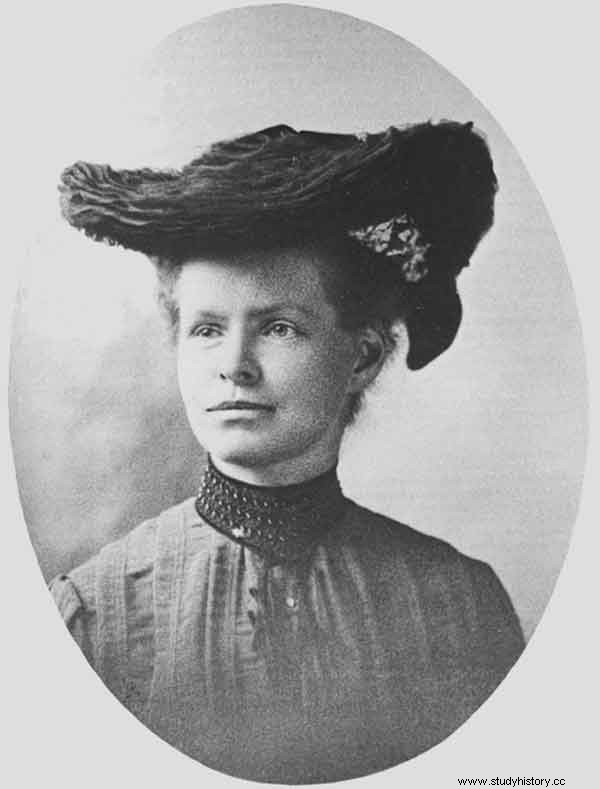Nettie Maria Stevens (1861 – 1912) was an American scientist and unsung pioneer in genetics.
A late education

Daughter of Julia Adams Stevens and Ephraim Stevens, carpenter, Nettie Maria Stevens was born on July 7, 1861 in Vermont, into a middle-class family. She and her three siblings have access to quality studies and Nettie quickly proves to be a brilliant student:head of class at Westford Academy , she graduated in 1880. She worked as a teacher for three years before entering the Westfield Normal School in 1883; she completes the four-year program in two years.
While she dreams only of continuing her studies, Nettie embarks on teaching to save for her education. For sixteen years she worked as a teacher and librarian. In 1896, she entered Stanford University (California) to begin studies in biology, and obtained her final diploma in 1900.
Identification of the Y chromosome
At Bryn Mawr College (a private establishment reserved for women), Nettie Stevens specialized in cytology:the morphological study of isolated cells. It was there that, at the age of thirty-nine, she began her research career, working in particular with the former director of the biology department Edmund Beecher Wilson and with his successor Thomas Hunt Morgan.
In 1903, Nettie obtained her doctorate. She carries out her research activities in particular in the fields of cytogenetics (the study of genetic phenomena at the cell level) and embryology (morphological description of the transformations of the fertilized egg into an organism). She was particularly interested in the process of determining the sex of the embryo and, in 1905, identified the Y chromosome and discovered its role in sex determination. At the time, many scientists, including Thomas Hunt Morgan, did not immediately accept this discovery of great importance in his field. In the same year, Edmund Beecher Wilson came to a similar conclusion. Subsequently, Nettie will also be the first to discover the female sex chromosomes; in an article, Wilson will thank her for this discovery.
"The Scientific Work of Miss N.M. Stevens"
Nettie Stevens died of breast cancer on May 4, 1912. After her death, Thomas Hunt Morgan, who would later receive the Nobel Prize for his work in genetics, wrote an article for the journal Science titled "The Scientific Work of Miss N. M. Stevens" . He implies that Nettie was more of a technician than a real scientist. He had however written about him, in a letter of recommendation:“Of the graduate students that I have had during the last twelve years I have had no one that was as capable and independent in research as Miss Stevens” (“Of the students I have had in the past twelve years, I have not had one so able and independent in research as Miss Stevens”) …
